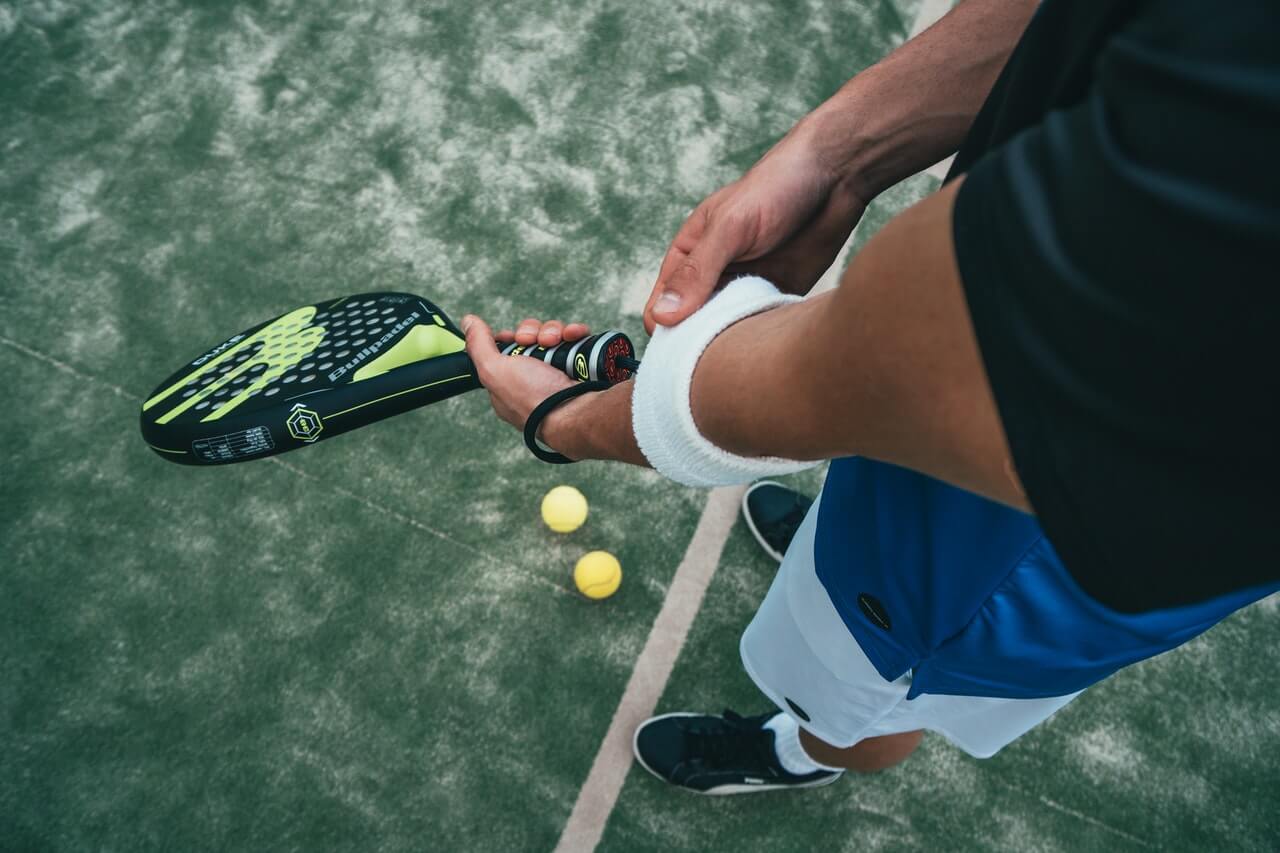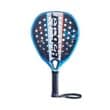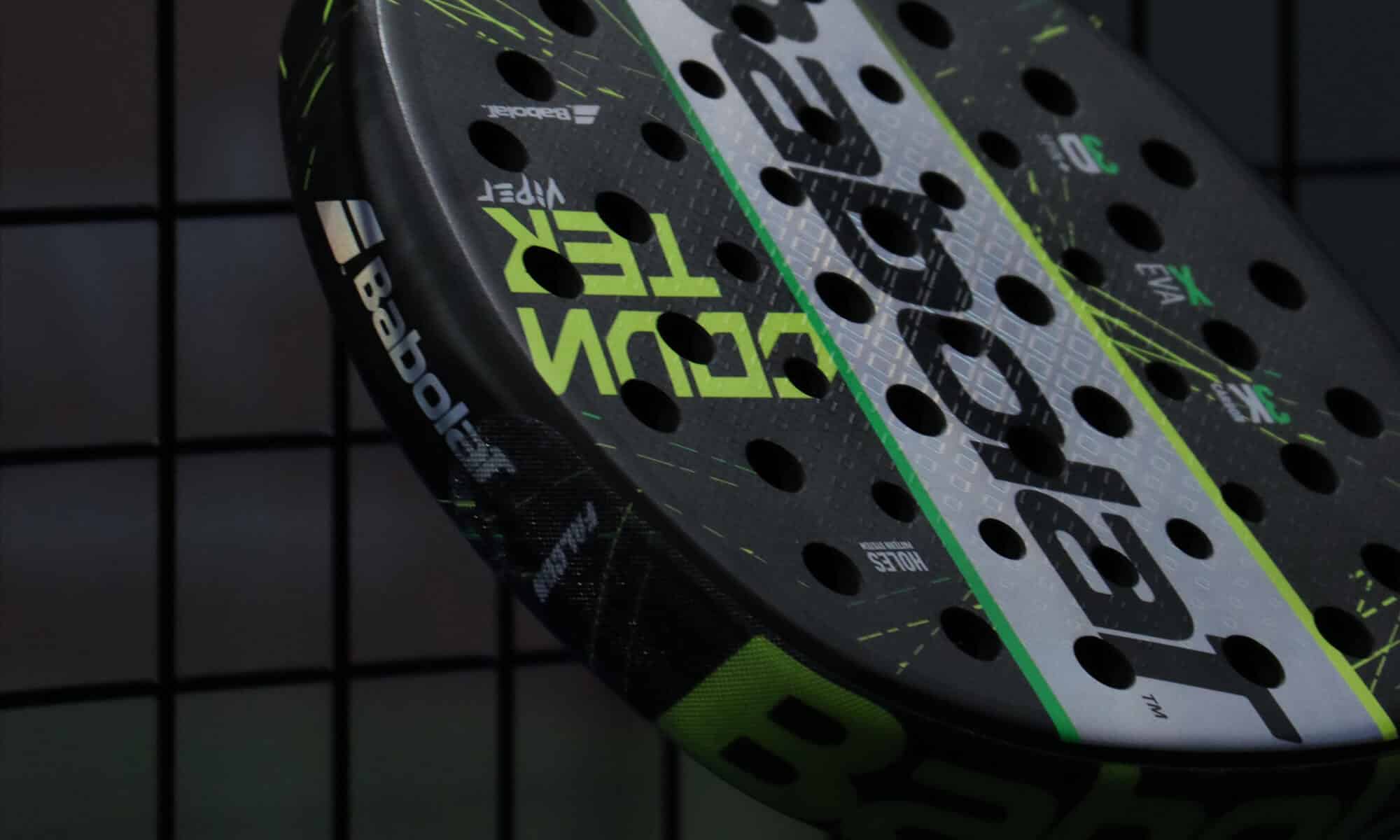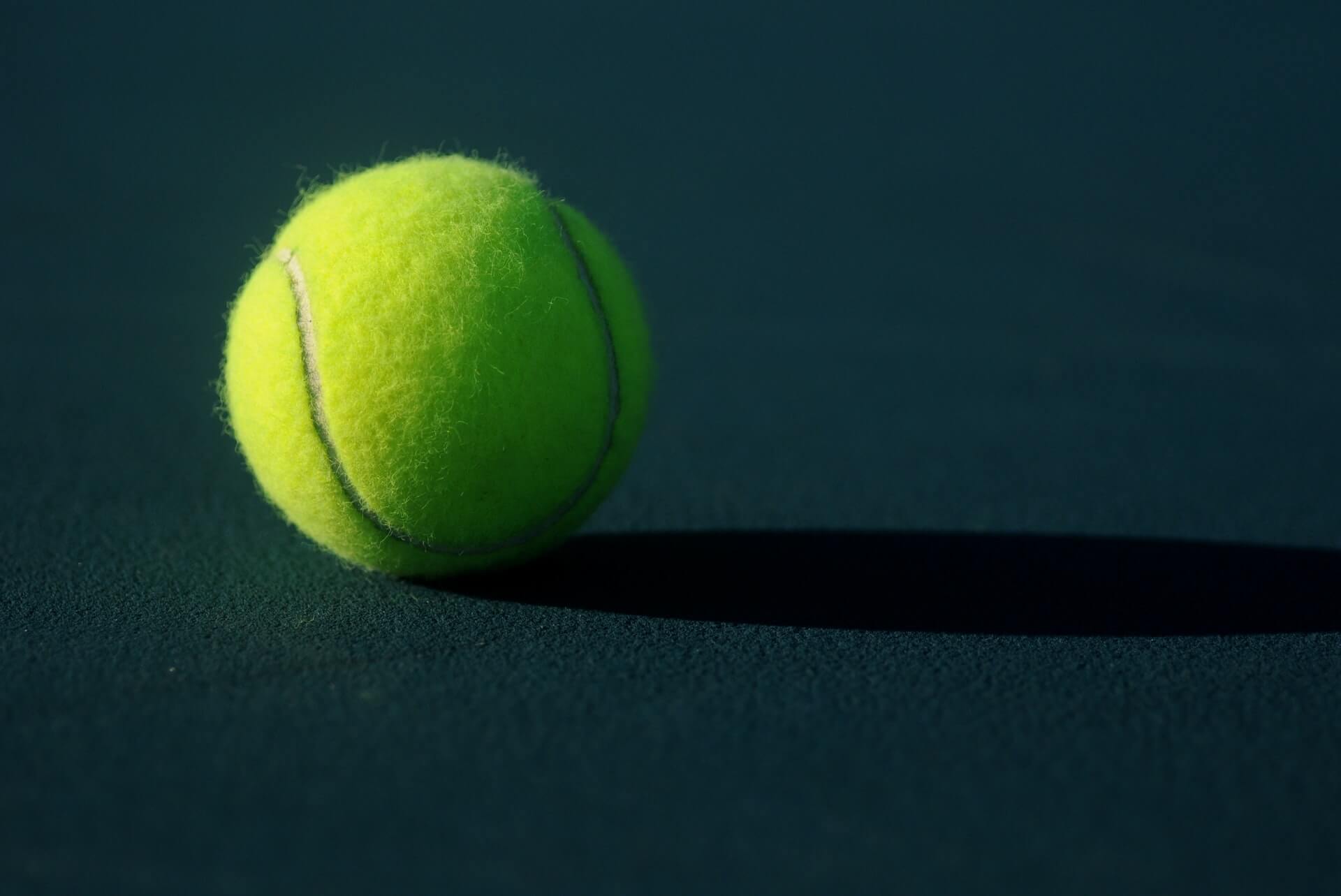Brief padel rules
- It’s most common to play double
- The serve can’t hit the metal net, but it is allowed to hit the glass
- The lines on the court is only in use when performing the serve
- The serve is performed diagonally below the hip and needs to go inside the serve square
- You have two serves
- Counting points works the same way as Tennis
- You’re allowed to let the ball bounce in the fence and the glass wall before you hit the ball
- You’re also allowed to hit the ball into your own glass wall, so it bounces to the other side of the net.
- You’re not allowed to hit the ball into your own fence, so it bounces to the other side
How you win at padel
There is several ways to win a ball:
- You win every time the ball bounces twice on your opponents side
- You win the point if the opponents hit the ball in their side of the net
You win a point if the opponent knocks the ball out of the court or that it goes directly into one of the walls. (However, you can smash the ball directly into the ground and let it bounce out of the cage, it counts as one point. If the ball is smashed outside, it is okay for the opponent to run off the field and try to hit the ball before it bounces outside on the ground.) - You win the point if the opponents hit the ball in their side of the fence
- You win the point if the ball would bounce on your opponent.
How you lose the point in padel
The balls in a padel can be very long, and as a spectator it is very entertaining and fun to watch. Do you want to know how to lose a ball in a padel? Here we go through the different ways you lose a point in padel.
- You lose the point if the ball bounces in your side more than once. The same applies when during the serve.
- You lose the point if the ball hits the glass before it bounces on the ground. You are allowed to hit the ball into your own glass after the first bounce on your side.
- If you hit the ball in the net on your side, you lose.
- If you touch the ball twice with your racket, you lose the point.
- You also lose the point if the ball bounces on either you or your partner’s body.
- You lose if you make two serve errors. If you serve on the net edge, so it bounces to the next side, the ball won’t count and there will be a redo.
- There will also be a loss of a point if you or your teammate touches the net either with your bodies or rackets.
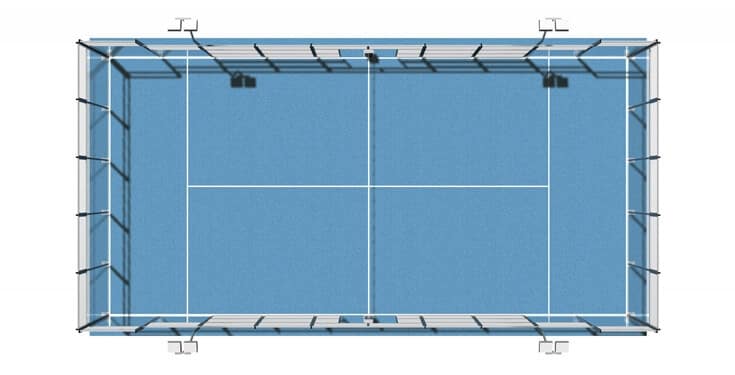
The court
The playing field in padel rules
Padel is often said to be a mixture of squash and tennis and can be played both indoors and outdoors. The size of the playing field depends on whether you play doubles or singles padel.
The most common is doubles, for example, two against two. In these cases, the playing field is 10×20 meters and consists of two halves divided by a net in the middle. If you choose to play singles, the playing field is 6×20 meters instead.
In Sweden, more and more padel halls are popping up where you can rent a court for an hour several times a week. Most courts are designed for doubles, i.e. 10×20, and it is very rare to play singles matches.
- Size for double: 10 x 20 meters
- Size for single: 6 x 20 meters
What surfaces do you play on?
Padel can be played on several different surfaces, and they are similar to tennis. Artificial grass is one of the most common surfaces, especially if you play in the outdoor courts in Spain.
Other common surfaces are porous concrete and cement. There are also padel courts where the surface is made of a synthetic material. Which material you prefer to play on is usually a matter of taste.
If you have the opportunity, you can always test different surfaces and compare them with each other. There are specially adapted padel shoes for both men and women that fit well on the different surfaces.
- Artificial grass
- Porous concrete
- Cement
- Synthetic materials
Lines on the court
A padel court has three lines, two short lines and a long line in the middle of the court. These lines form four server boxes, two on each side of the court.
The lines are also only used when serving. The longer line runs through the middle of the court, which means that each serving box is five meters wide.
These dimensions are based on a padel court that is adapted for doubles, i.e. 10×20 meters.
The net on the pitch
A padel court always has a net in the middle that separates the two halves of the court. This net must always be ten metres wide and 0.88 meters high to be approved. In addition, the edges of the net must be slightly higher, namely 0.92 metres.
The top of the net must have a white strip which must be five centimetres long. If the ball bounces through this strip onto the opponent’s half of the pitch, a so-called net roller, then that ball is valid. The net is tightened with a metal line attached to a pillar on each side.
If you are playing on a rented court, the net is usually set up in advance and is not something that you as a player need to think about.
Glass walls and fences
The padel court is surrounded by glass and grids used in the game itself. For a padel court to be approved, the rear wall must be four metres high, three of which must be covered with glass.
The remaining one metre must be covered with a grid. The walls always look the same whether you are playing outdoors or indoors. You will be able to read more about how the walls are used in the game further down in the text. They play quite an important role during the matches.

How you play padel
Padel rules during the match
As we mentioned at the beginning, padel is typically played two on two. All players must have an approved padel racket when they play, and if you don’t have your own, it can usually be rented or borrowed from court rental companies. Keep weight in mind when choosing your racket.
A heavier racket will provide more power behind the strokes, but it will also be harder to handle. Rackets designed for men weigh a little more than those designed for women, for obvious reasons. At the bottom of the padel racket is a small strap that you attach around your wrist. It should stay in place the whole time you play.
You should also have a ball that is designed for padel otherwise the game can go too fast, and it can be difficult to keep up. A padel ball looks just like a tennis ball but differs slightly in dimensions and bounce.
However, it can be difficult for a beginner to tell the difference. It is much harder to play with a tennis ball because it is much faster. The pace is supposed to be slower in padel than in tennis.
What is the game about?
The game is about being the first to win a certain number of sets. Women usually play best out of three sets and men best out of five, just like in tennis. In general, the scoring is the same as in tennis, which you can read more about later. The game always starts with one player of one team serving.
The ball is then allowed to bounce once on the opponent’s half of the court before it is returned. Only one player is allowed to hit the ball each time it enters their own half of the court. This means that players cannot pass to each other, as in volleyball, for example. You can choose whether to hit the ball after it has hit the wall, directly on the volley, or after a bounce.
You can also decide to let it bounce and then shoot it into the wall, so it goes over to the opponents. So unlike tennis, the ball can’t go off the line, and it’s very rare for the ball to go over the four-meter high glass walls. So the most important thing to remember is that the ball can only bounce once onto the ground.
The serve
The game always starts with a serve, which is the same as in tennis. As a player, you choose how you want to hit your serve, but there are certain rules you must follow. It must be hit at waist height or below, not over the head as in tennis.
When you hit your serve, you must stand behind the distinctive serve line that you find between the wall and the net. You change your serve every time, for example, you switch sides in your half of the court every time you serve the ball. The ball must also bounce once on the ground before you are allowed to hit it over the net.
A serve should always go diagonally to the opponent’s, and there is a similarity to tennis here too. It is important that the bounce lands in the correct service box on the opponents’ half of the court, otherwise the serve will be counted as invalid. It is permissible for the ball to bounce off the wall after it has bounced into the serving box. If you are the opponent and receive the serve, you choose whether to bounce the ball into the wall or to hit it back immediately after the bounce.
There are a couple of different ways you can get a serve error. This happens if the ball goes into the net or if it bounces straight into one of the walls or fences. You have the opportunity to hit two serves, just like in tennis, otherwise, the ball goes to your opponents.
The rules are also the same as for tennis when the ball bounces into the net and then over to the opponents’ half of the court, then the serve is retaken without it counting as a serve. This is also known as a net serve.
Read more how you can improve your padel serve.
Counting score
Scoring will also be familiar from tennis as it works in exactly the same way. When you win the first point you get “15”, when you win the second point you get “30” and when you win the third point you get “45”.
The fourth score determines who wins the point for that match. If both teams are tied at 40, winning the next ball is not enough to win the match. Then the game enters a phase called “deuce” just like in tennis. You can also call it a tie in English. In this case, you have to win two balls in a row to win the match.
If you win the next ball, you have an “advantage” as we also say in tennis. If the person with the advantage loses the next ball, the game reverts to “deuce”. In practice, this can go on for as long as you like, which means it can be a very long game if the pairs are even.
Set
Sets also work in the same way as in tennis. The total number of sets played varies slightly, but normally men play best of five sets and women best of three sets. If a woman wins two sets in a row, she has won the match.
To win a set, the pair must win six sets of matches, and again this works in the same way as in tennis. If you find yourself in a situation where the score is 5-5 in a set, you will play two more matches. So you can never win with odd numbers, but there must be a difference of at least two won matches.
If, after two matches have been played, the score is tied at 6-6, the game will go into what is called a tiebreaker. If you’re a tennis fan, you’ll probably already recognize this too. The tiebreaker works in such a way that the pair that reaches seven points first wins the game. And just like always, you have to win by at least two points for it to count.
Common strokes in padel
Avslutning om padel regler
These are the most basic rules of padel. It gives you, the beginner, a good overview of the game and enough information to start playing. Of course, it is possible to delve even deeper into the rules, but we thought this was a good start.
Once you feel more comfortable with the game and the basics, you can move on and learn more. So now just lace up your padel shoes, get out your racket and start playing. Good luck!
Once you know the rules of padel, it might be fun to try betting and playing padel. Of course, it’s important to know that there is a risk of losing your money, but at the same time it can make a match on TV much more interesting.
We also recommend checking out our table of padel levels in MATCHi to know which opposition is right for you.


